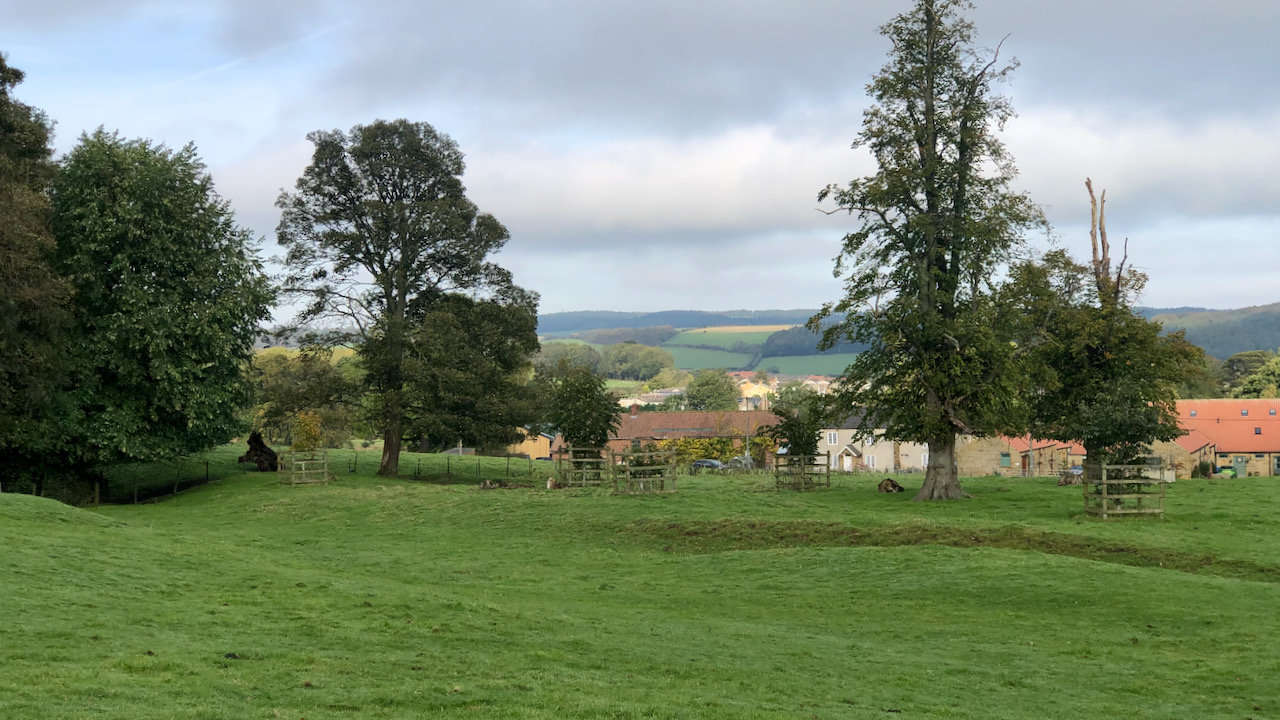Cutting the First Sod on the Codhill Branch on the Gisbro’ and Middlesbro’ Railway. — It having been generally circulated throughout the town of Gisbro’ and neighbourhood that the first sod on the Codhill branch of the Middlesbro’ and Gisbro’ railway for the working of ironstone would be removed on Monday last, a large company of gentlemen had assembled near Tommy Allison’s Farm, and many of the labouring classes, armed with spades and pickaxes, awaited the arrival of Mr. Robinson, foreman to Joseph Pease, Esq., who was expected to arrive at twelve at noon, with workmen to “make a beginning.” He, however, had been detained by some unforeseen accident, and did not reach the spot until after two o’clock with a “full force.” ‘ The whole of the company immediately proceeded to the place for the opening of the ironstone at Codhill, when Michael Bradley, of Newton, innkeeper, cut the first sod and produced a massive and splendid specimen of ironstone. Refreshment having been provided, an adjournment was made to Reuben Leng’s, a tenant under H. W. Thomas, Esq., of Pinchinthorpe House, and upon whose property at Codhill the fine field of ironstone remains imbedded. The toast of the day — “Success to the opening and working of the Cleveland ironstone, and the Middlesbro’ and Gisbro’ railway, having been proposed by the Chairman (Mr. Thomas), and universally responded to by the company standing and giving three times three, and one cheer more, the party retired, one and all being highly delighted with the proceedings they had witnessed, and hearts gladdening with pride and exultation, that a new era of prosperity and happiness was dawning and near at hand. The Workmen were then instructed to be at work the following morning to commence in right good earnest.
So reported the York Herald on 23 October 18521‘Country News. | York Herald | Saturday 23 October 1852 | British Newspaper Archive’. 2023. Britishnewspaperarchive.co.uk <https://www.britishnewspaperarchive.co.uk/viewer/bl/0000498/18521023/016/0003> [accessed 23 October 2023]. The article recounts the joy of the townsfolk upon the promise of employment and wealth for their town. However, it makes no mention of Joseph Pease’s ambition of further riches amidst the abundant ironstone wealth below Codhill.
To understand this celebration, we need to be transported back to a time when railways were forging new frontiers and the promise of prosperity hung heavy in the air. Joseph Pease of Darlington, along with his son Joseph Whitwell Pease, had secured a lease of thirty years for the mineral rights, starting in 1851, from one Henry Thomas, the owner of the Codhill estate.
Their hopes were pinned on the prospect of a profitable ironstone mine – but there was a catch. To make this venture a success, they needed a railway to transport their ironstone to the blast furnaces of Middlesboro’. And they had the green light to build one.
Now, before I dive into this railway mania, perhaps it’s helpful to understand the lay of the land in 1850. Guisborough sat there, unconnected by a railway, while the Stockton and Darlington Railway Company had been expanding its influence since its opening in 1825. Joseph Pease was a founding father of that company.
So, in November 1851, the Middlesboro and Guisborough railway prospectus was published. Oddly enough, the railway plan barely grazed Guisborough itself, terminating near the crossroads of Hutton Lane and Rectory Lane. The excuse? They didn’t want to pay hefty compensation sums to cut through the town.
So, barely a year later, that first sod was turned for the branch line to Codhill mine, built as a tramway and with a one-in-nineteen incline. The race to Codhill was on.
But, alas, Codhill Mine’s glory was short-lived. Swings in demand and the fickleness of prices, combined with the lacklustre quality of Hutton stone, sealed its fate. Furthermore, Hutton was nowhere near as productive as Upleatham mine, which the Peases took over in 1857. It must’ve been a bitter pill to swallow for Henry Thomas, the Codhill estate owner, who bet his fortune on a promising start but died in 1864 before witnessing the mine’s closure.
The Peases, however, held onto their lease with a glimmer of hope for better days ahead, but eventually buying the land outright from Thomas’s widow. They gradually purchased more holdings, significantly enlarging the estate and building the lavish Hutton Hall in Victorian Gothic style in 1866.
In the photo above, that cutting on the left is the remains of the tramway that once ran from the Pinchinthorpe walkway to the mine. Its route is now followed by the road through Hutton village, before ascending the steep forest track.
Those buildings in the distance? They’re part of a farm with a history stretching back at least two centuries. Over time, it’s been called Hutton Field House, Hutton Hall Farm, Hutton Home Farm, and finally, it settled as Home Farm in the latter part of the 20th century. In days of yore, it has also been known by other names, like Church Farm and Hall Farm. An 1881 Pease document even dubbed it Hutton Grange. The farm got a facelift in 1826, thanks to the Thomas family, and when John Thomas passed away in 1843, his lad Henry Thomas took over Home Farm and other parts of the Hutton estate.
Further reading:
- “Guisborough Before 1900”. Edited by B.J.D. Harrison and G. Dixon. 1982.
- Dixon, Grace. “Two Ancient Townships – Studies of Pinchinthorpe and Hutton Lowcross”. 1991
- Smith, Paul. “Blue Lake and Home Farm. 2005.
- 1‘Country News. | York Herald | Saturday 23 October 1852 | British Newspaper Archive’. 2023. Britishnewspaperarchive.co.uk <https://www.britishnewspaperarchive.co.uk/viewer/bl/0000498/18521023/016/0003> [accessed 23 October 2023]

Leave a Reply